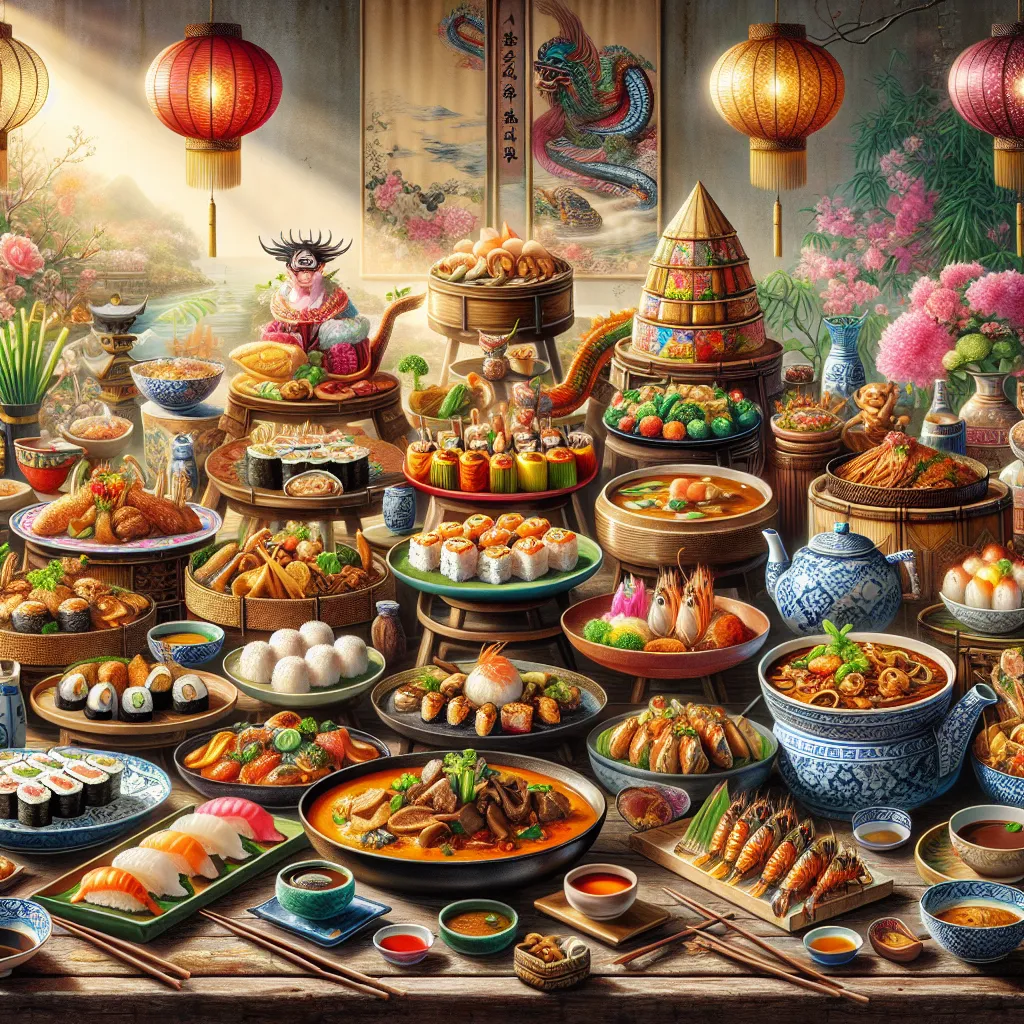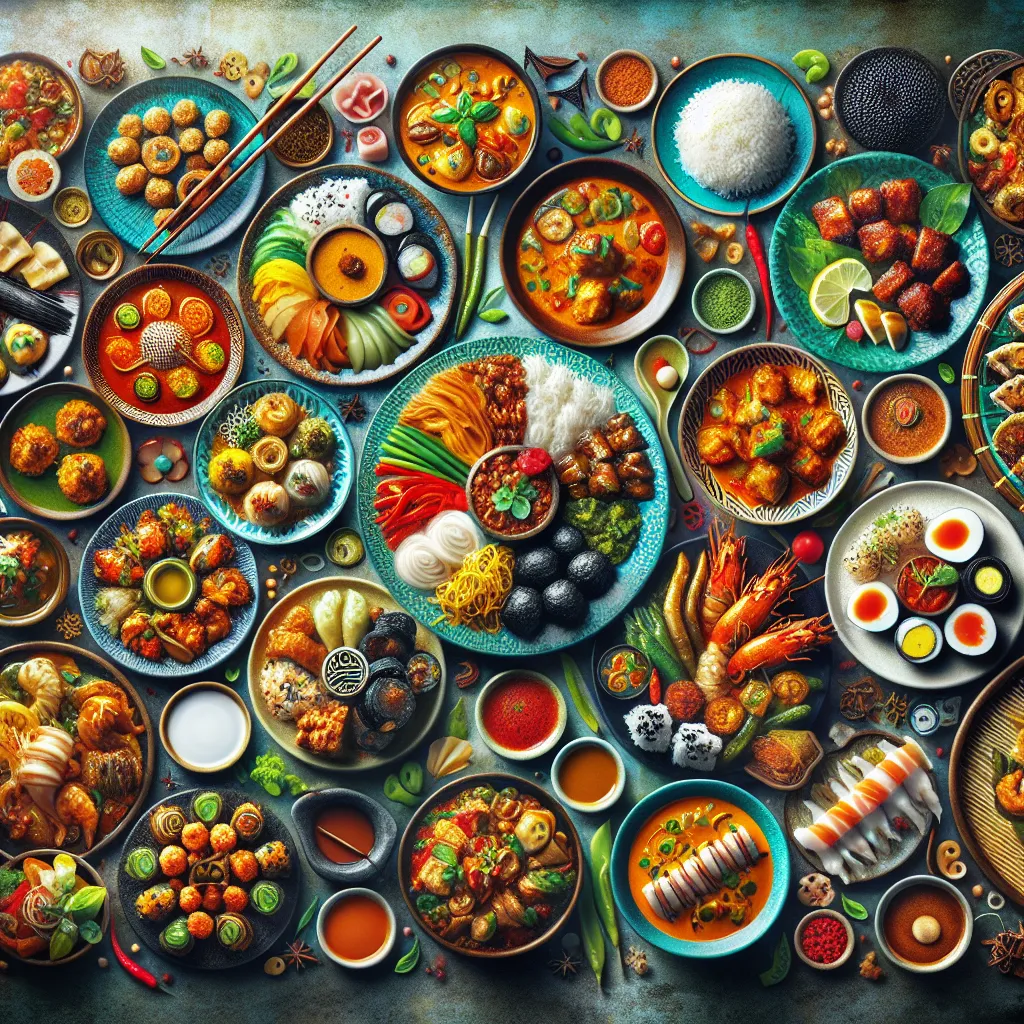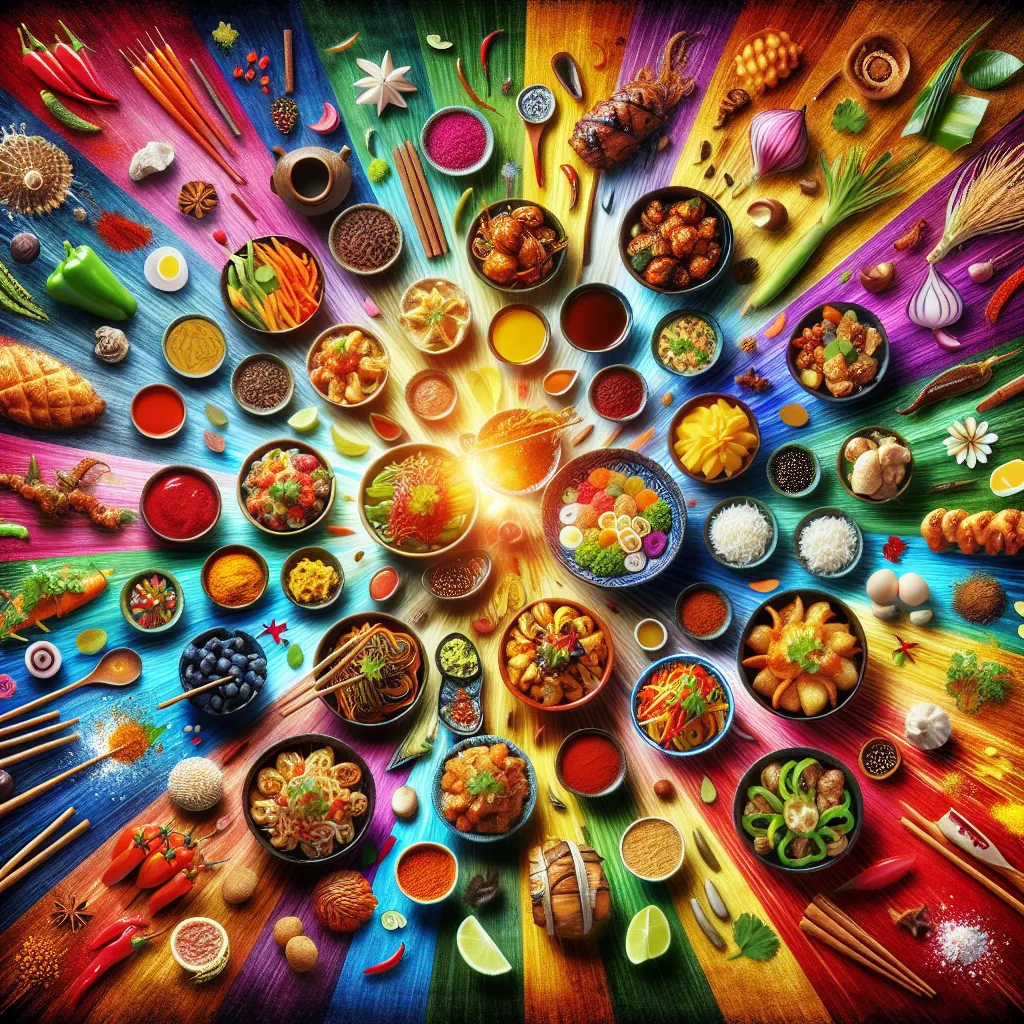Savoring the Diverse Spice Blends of Asian Cuisine
Exploring the rich flavors of Asian cuisine offers a tantalizing journey through a diverse range of spice blends that captivate the senses. Asian cuisine is renowned for its exquisite use of spices, herbs, and seasonings, each offering a unique and complex flavor profile. From the fiery heat of Sichuan peppercorns to the delicate aroma of lemongrass, the spice blends of Asian cuisine showcase a rich tapestry of flavors.
One of the most iconic spice blends in Asian cuisine is the Chinese five-spice powder, which harmoniously combines star anise, cloves, Chinese cinnamon, Sichuan peppercorns, and fennel seeds. This blend brings together the warmth of cinnamon, the sweetness of anise, and the numbing heat of Sichuan peppercorns to create a symphony of flavors in dishes such as roast duck and char siu pork.
Meanwhile, in Thai cuisine, the fragrant blend of lemongrass, galangal, kaffir lime leaves, shallots, and chilies forms the essential base for dishes like Tom Yum soup and Thai green curry. The zesty, citrusy notes of lemongrass and the spicy kick of galangal elevate the dishes to a new level of sensory delight.
Moreover, the complex spice blend of Indian curry powder, which varies by region, may include a combination of turmeric, cumin, coriander, cardamom, and other spices, adding layers of depth and warmth to classic dishes such as chicken tikka masala and vegetable korma.
Embracing the diverse spice blends of Asian cuisine invites food enthusiasts to embark on a remarkable culinary adventure filled with depth, complexity, and sensory indulgence. Whether savoring the fiery heat of Sichuan peppercorns or the aromatic allure of lemongrass, the spice blends of Asian cuisine never fail to captivate the palate and ignite the senses.
Delving into the Complex World of Asian Taste Sensations
Delving into the complex world of Asian taste sensations is a journey that takes us through a myriad of flavors, textures, and aromas. Asian cuisine is renowned for its rich diversity, offering an array of taste experiences that captivate the palate. From the umami depth of miso in Japanese dishes to the fiery heat of Thai chilies, each flavor tells a story of tradition, history, and regional identity.
One of the defining features of Asian cuisine is the harmonious balance of flavors. Traditional dishes often incorporate a combination of sweet, sour, salty, bitter, and spicy elements, creating a multi-dimensional taste profile that delights the senses. Whether it’s the subtle sweetness of Chinese hoisin sauce or the pungent tang of Korean kimchi, each flavor component plays a crucial role in creating a cohesive and unforgettable culinary experience.
Exploring the rich flavors of Asian cuisine also involves understanding the significance of umami, often considered the fifth taste. Umami, which translates to “pleasant savory taste” in Japanese, is present in ingredients such as soy sauce, mushrooms, and seaweed, adding a depth and complexity that elevates dishes to new heights. The appreciation of umami is integral to unlocking the full potential of Asian flavors.
Furthermore, the use of aromatic ingredients such as lemongrass, ginger, and galangal adds another layer of complexity to Asian cuisine. These fragrant components not only infuse dishes with enticing aromas but also contribute distinct undertones of flavor that distinguish Asian cooking from other culinary traditions.
In conclusion, delving into the complex world of Asian taste sensations offers a truly immersive and enlightening culinary experience. By embracing the diverse flavors and understanding the cultural significance behind each taste, we gain a deeper appreciation for the rich tapestry of Asian cuisine.
Unveiling the Culinary Treasures of Asian Gastronomy
When it comes to Asian cuisine, the array of flavors, spices, and cooking techniques is simply astounding. Exploring the rich tapestry of Asian gastronomy unveils a world of culinary treasures waiting to be discovered. From the tangy and spicy dishes of Thai cuisine to the umami-packed delights of Japanese sushi, Asian cooking is a journey for the senses. The secret behind the vibrant and diverse flavors lies in the use of fresh ingredients, intricate flavor pairings, and a deep-rooted culinary heritage.
Asian cuisine is renowned for its harmonious blend of flavors, often balancing the quintessential tastes of sweet, sour, salty, bitter, and savory. Each region boasts its own distinct ingredients and culinary traditions, offering a fascinating glimpse into the gastronomic diversity of the continent. From the fiery curries of India to the delicate steamed dumplings of China, every dish tells a story of history, culture, and the creative prowess of Asian chefs.
Furthermore, the exploration of Asian gastronomy goes beyond just the taste, as it delves into the art of food presentation and dining rituals. The visual appeal of dishes, the use of vibrant colors, and the elegance of traditional servingware all contribute to the immersive experience of Asian dining. Whether it’s the ornate bento boxes of Japan or the sizzling hotpots of Korea, every meal is a sensory journey that celebrates the beauty of food.
In essence, delving into the rich flavors of Asian cuisine is a gateway to understanding the complexities and nuances of a diverse culinary landscape. It is an invitation to embark on a flavorful adventure, uncovering the hidden gems and experiencing the sheer delight of Asian gastronomy.




